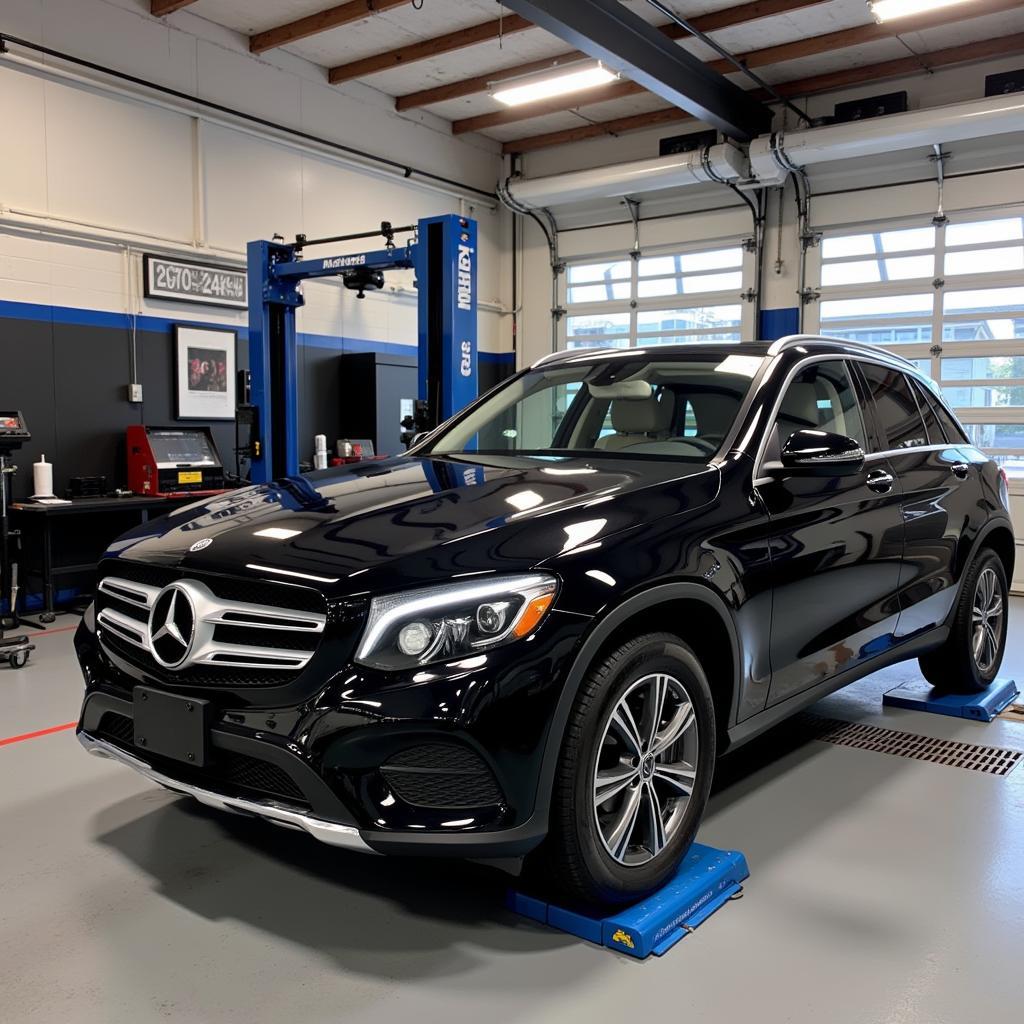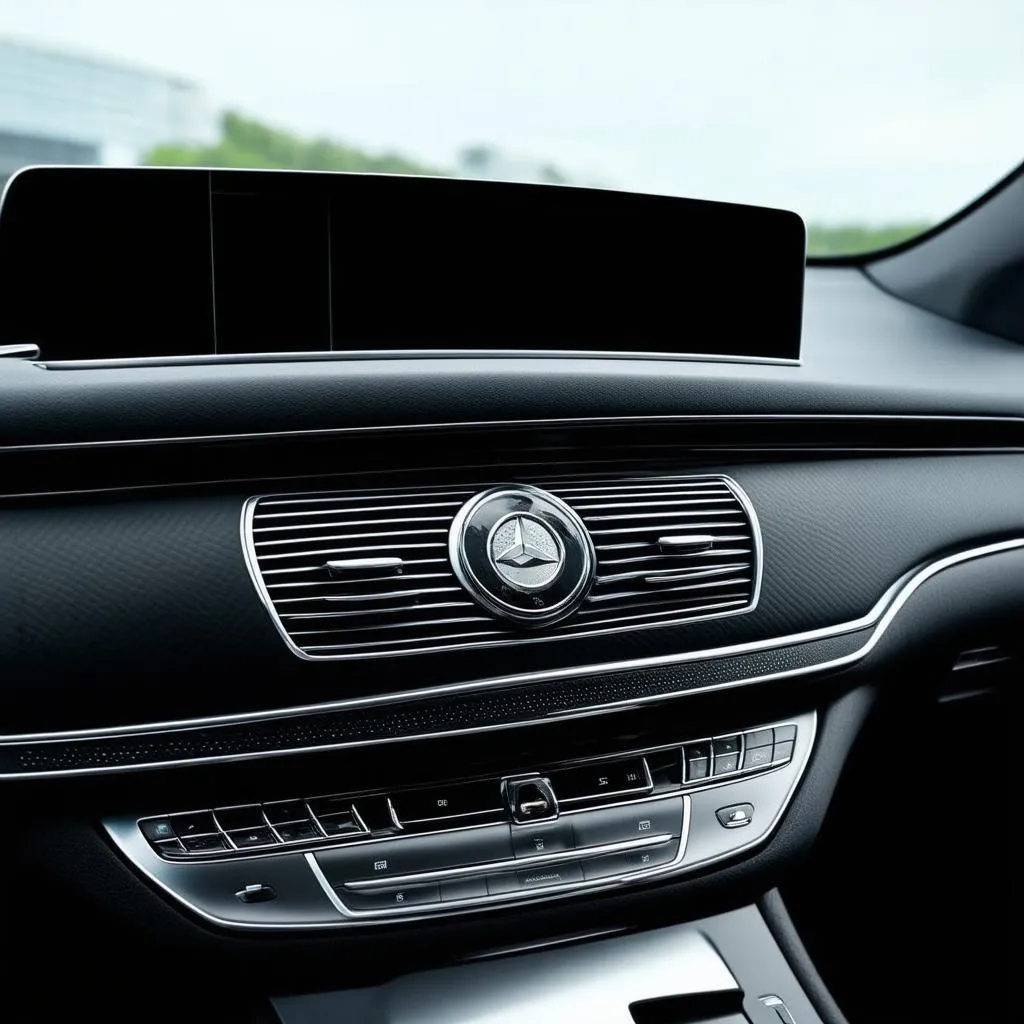The 2019 Mercedes GLC is a luxury SUV known for its performance and style. However, some owners have reported a “crabbing” issue, where the vehicle feels like it’s moving sideways, especially during low-speed turns. This mercedes glc crabbing fix 2019 guide will explore the causes of this problem and provide solutions to help you get back on the road smoothly.
Understanding the Mercedes GLC Crabbing Issue
The “crabbing” or “binding” sensation often occurs when the front wheels are turned at a sharp angle, such as when parking or making a U-turn. It can feel like the tires are skipping or scrubbing against the pavement. This can be a disconcerting experience, especially in a vehicle known for its smooth ride. This issue is frequently associated with the all-wheel-drive system, specifically the transfer case.
Common Causes of Crabbing in 2019 Mercedes GLC
Several factors can contribute to the crabbing issue in your 2019 Mercedes GLC. One of the most common culprits is a worn or damaged transfer case. Other potential causes include tire pressure discrepancies, worn suspension components, and even software glitches. Identifying the root cause is crucial for effective mercedes glc crabbing fix 2019.
Transfer Case Issues
The transfer case is responsible for distributing power between the front and rear axles. If it’s malfunctioning, it can cause uneven power distribution, leading to the crabbing sensation.
Tire Pressure and Alignment
Incorrect tire pressure or misalignment can also contribute to this issue. Uneven tire wear can exacerbate the problem, making the crabbing more pronounced.
Suspension Component Wear
Worn or damaged suspension components like bushings and control arms can affect the wheel alignment and geometry, potentially leading to crabbing.
Software Glitches
In some cases, a software update or recalibration of the all-wheel-drive system might be necessary to address the crabbing issue.
Diagnosing the Problem
Accurately diagnosing the source of the crabbing issue is essential for implementing the correct mercedes glc crabbing fix 2019. A thorough inspection by a qualified technician is recommended. They can use specialized diagnostic tools to pinpoint the problem, whether it’s related to the transfer case, tires, suspension, or software.
Inspection by a Qualified Technician
A skilled technician can evaluate the vehicle’s behavior, check for any error codes, and visually inspect the relevant components for signs of wear or damage.
Diagnostic Tools and Software
Modern diagnostic tools can provide valuable insights into the vehicle’s systems, helping identify potential software glitches or malfunctions in the all-wheel-drive system.
Mercedes GLC Crabbing Fix 2019: Solutions and Repairs
Once the cause of the crabbing has been identified, the appropriate repair can be carried out. This may involve repairing or replacing the transfer case, adjusting tire pressure, performing a wheel alignment, replacing worn suspension components, or updating the vehicle’s software.
Transfer Case Repair or Replacement
If the transfer case is the culprit, it may need to be repaired or replaced. This can be a costly repair, so getting a second opinion is always a good idea.
Tire Pressure Adjustment and Wheel Alignment
Ensuring proper tire pressure and alignment is a relatively simple and cost-effective solution that can sometimes resolve the crabbing issue.
Suspension Component Replacement
Replacing worn suspension components can improve the vehicle’s handling and stability, potentially eliminating the crabbing sensation.
 Mercedes GLC Wheel Alignment
Mercedes GLC Wheel Alignment
Software Updates and Recalibration
In some cases, a software update or recalibration of the all-wheel-drive system can resolve software-related glitches that contribute to the crabbing issue.
“Regular maintenance and timely repairs can prevent many issues, including the crabbing problem. Don’t ignore unusual noises or sensations – address them promptly to avoid more significant problems down the road.” – John Smith, Automotive Engineer
Preventing Future Crabbing Issues
Regular maintenance, including tire rotations, alignments, and inspections of the suspension and all-wheel-drive system, can help prevent future crabbing issues. Addressing any unusual noises or sensations promptly can also prevent minor problems from escalating into major repairs.
Conclusion
The “crabbing” issue in a 2019 Mercedes GLC can be a frustrating problem, but with proper diagnosis and repair, it can be resolved. Whether it’s a transfer case problem, tire issue, suspension component wear, or a software glitch, addressing the root cause is essential for a mercedes glc crabbing fix 2019. Regular maintenance and prompt attention to any unusual vehicle behavior can help prevent future occurrences.
FAQ
- What does “crabbing” feel like? It feels like the car is moving sideways, especially during low-speed turns.
- What are the common causes of crabbing? Transfer case issues, tire problems, suspension wear, and software glitches.
- How is crabbing diagnosed? By a qualified technician using diagnostic tools and a thorough inspection.
- How is crabbing fixed? By repairing or replacing the faulty component, such as the transfer case, tires, or suspension parts.
- Can I prevent crabbing? Yes, with regular maintenance and prompt attention to unusual car behavior.
- Is crabbing expensive to fix? The cost depends on the underlying cause; it can range from a simple tire pressure adjustment to a costly transfer case replacement.
- How long does it take to fix crabbing? The repair time varies depending on the complexity of the issue.
For further assistance, please contact us via Whatsapp: +1 (641) 206-8880, Email: CARDIAGTECH[email protected] or visit us at 276 Reock St, City of Orange, NJ 07050, United States. We have a 24/7 customer support team.

